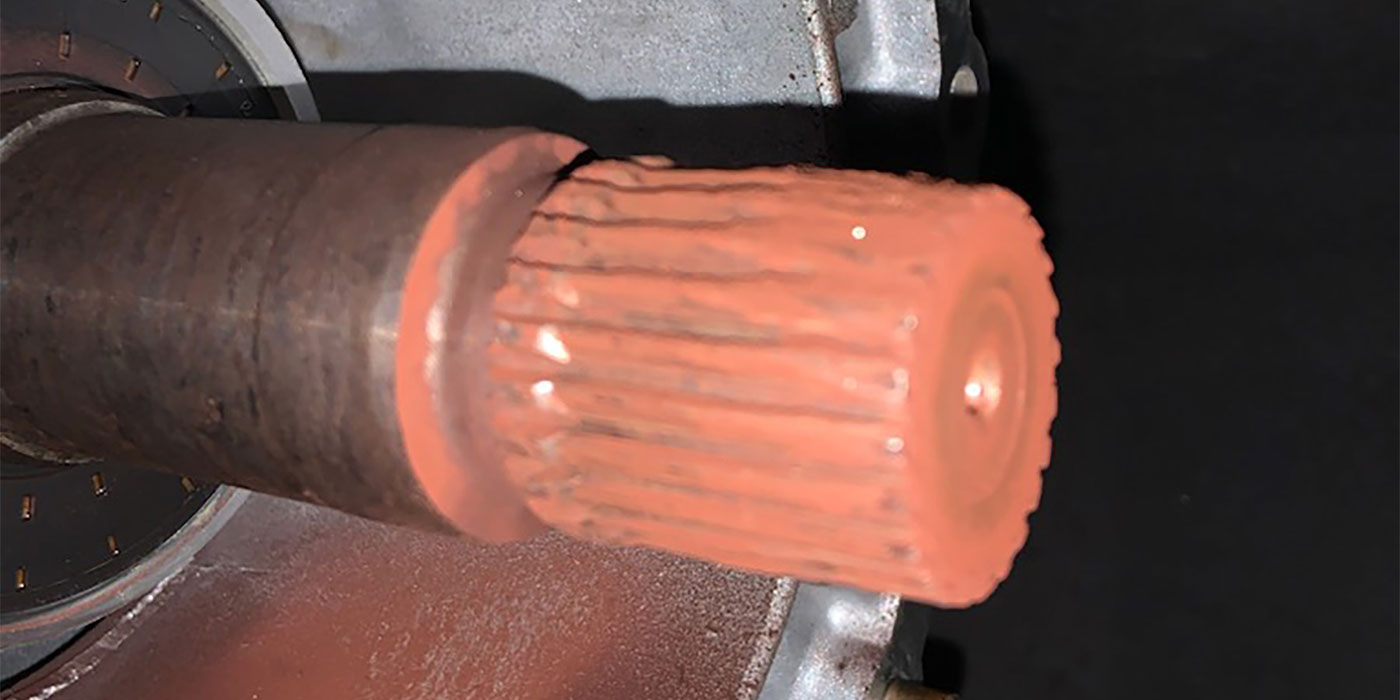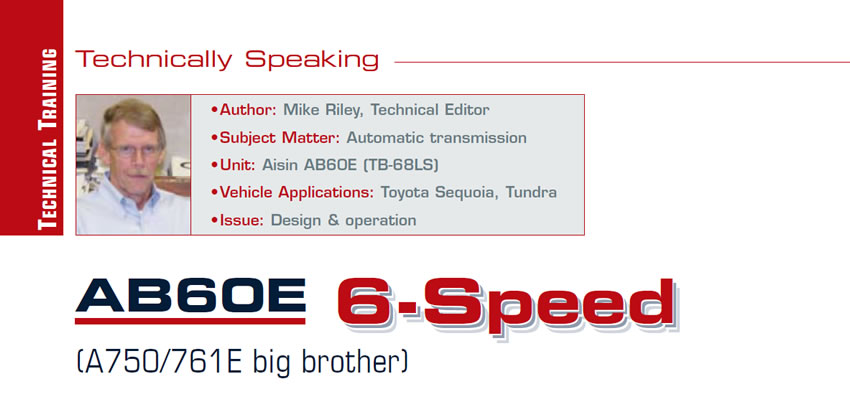
Technically Speaking
- Author: Mike Riley, Technical Editor
- Subject Matter: Automatic transmission
- Unit: Aisin AB60E (TB-68LS)
- Vehicle Applications: Toyota Sequoia, Tundra
- Issue: Design & operation
With all the changes swirling around the transmission world today, it’s no wonder that manufacturers look to benefit from “economy of scale.” Millions of dollars and much time are devoted to developing a completely new transmission platform. Once a new transmission design is implemented and proven successful, it only makes sense to enhance and expand upon it.
Take the case of the Aisin-produced A750E five-speed RWD, which was launched in 2003 for Lexus and Toyota. The Aisin handle for that model is TB-50LS. The A750E was a departure from not only the A340 family of transmissions but even the A650E five-speed. This new design was developed with an eye on the future.
With some slight modifications, Aisin was able to stretch the five-speed into a six speed. Beyond the valve body, which of course is different between the two models, the six speed A761E got an extra clutch pack and sprag assembly. The A750E C1-clutch assembly consists of the drum with shaft, piston and retainer. There is only one set of clutches and a regular clutch hub that splines to the rear sun-gear shaft.
The A761E, on the other hand, has more, as shown in Figure 1. In addition to the A750E stuff, the A761E C1 piston does double duty as an apply piston and C4-clutch drum. The item that looks like a piston is the C4 piston along with a retainer. There are two sets of clutches; the large-diameter is C1 and the small-diameter is C4.
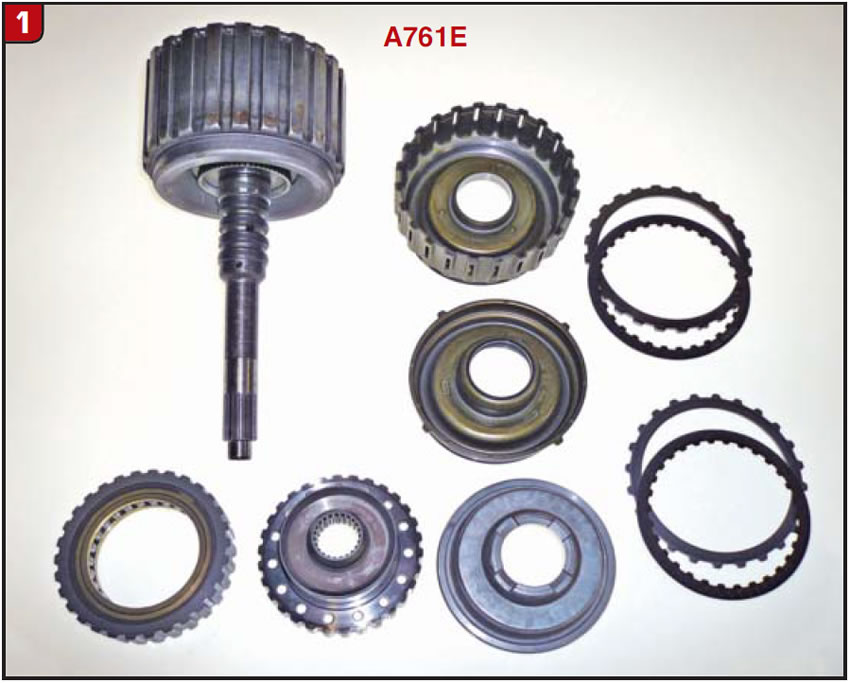
The A761E also has two clutch hubs, one for C1 and the other for C4. What separates the two hubs is the F4 sprag, which taken together helps to provide the sixth gear. The rest of the gear train is pretty much the same between the A750E and A761E. Computer strategy is certainly different for five- and six-speeds. The Aisin code for the A761E is TB-61SN.
In 2007, because of increased power demands by Toyota, Aisin released the AB60E (TB-68LS) for use in the Sequoia and Tundra vehicles with a 5.7L engine. The AB60E is a six-speed transmission like the A761E, except that it was given steroids. Everything is larger on the AB60E.

The pump on the AB60E is a gerotor design as in the A761E (Figure 2). The AB60E pump is the one on the right. Not only is it larger in diameter with larger gears, but also the pump seal and bushing are bigger, which means the converter hub is as well.
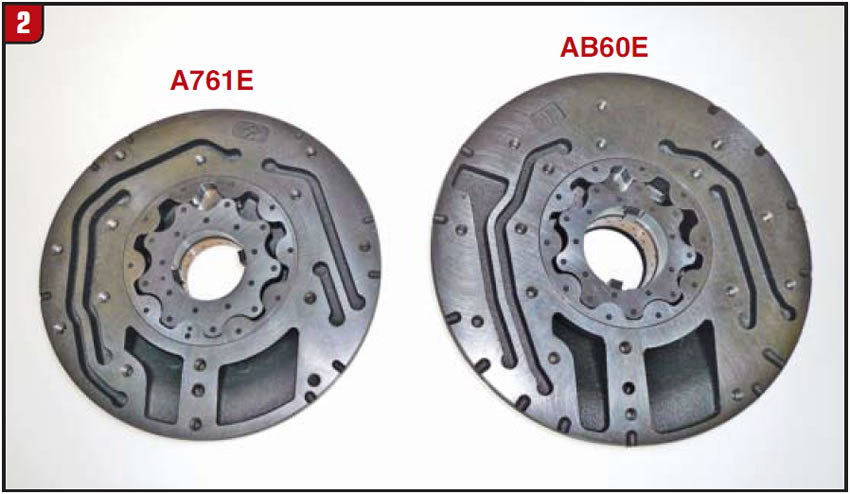
The clutch drums directly behind the pump are the C3 and C2. The C2 drum fits inside of the C3 housing and the clutch packs are different diameters.
The C1-clutch drum assembly is the one with the input shaft and the one that is distinguished between five- and six-speed models. The AB60E design is like the A761E, only larger (Figure 3). The AB60E also functions the same as the A761E.
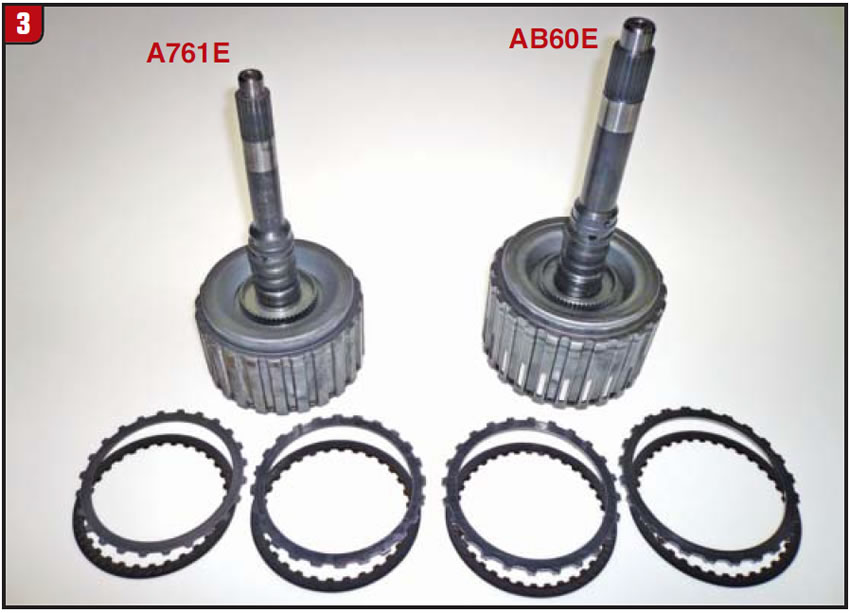
Both the A761E and the AB60E, in addition to the four rotating clutch packs, contain four different brakes (B1, B2, B3 and B4) (stationary clutch packs), which keep the friction-plate manufacturers busy. Other frictional elements included in both models are four sprag assemblies (F1, F2, F3 and F4). To say that this is a non-synchronous-shifting design would be an understatement.
Of the three planetaries used, the front planetary sun gear has a shell made to it. Aside from the AB60E sun shell/gear being larger than that of the A761E, the sun gear splines to the shell on the AB60E (Figure 4). The inner race of the F2 sprag is also part of the front sun gear. The AB60E sun gear’s diameter is larger than that of the sprag race, requiring that it be removable for installation of the F2 sprag. The front planetaries are comparable.
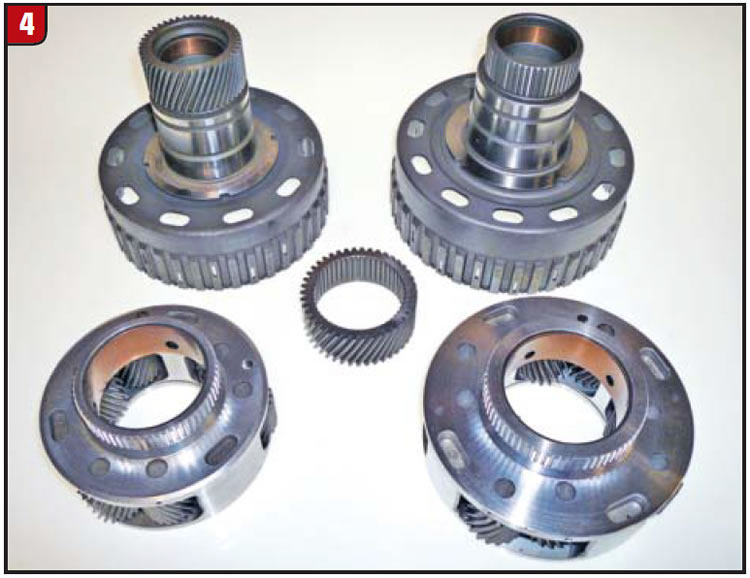
The center planet and sun gear are fairly traditional (Figure 5). The center sun gear splines to the rear sun-gear shaft. The center planet splines to the C2 hub on the front side and splines to the rear ring-gear flange on the back. The front and center ring gears are joined together as well. It becomes confusing after a while.
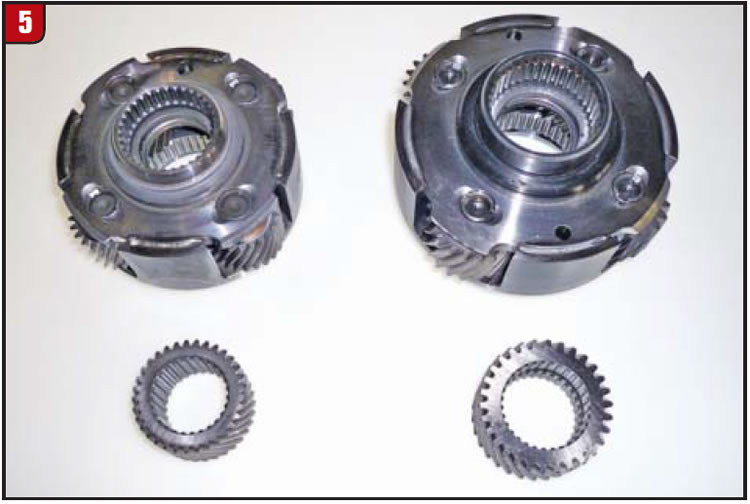
The rear planetary is actually made to the output shaft (Figure 6). Both the A761E and AB60E rear planets have the park gear made into them, and of course there is a bit of size difference. The rear sun gear has a shaft that almost resembles an FMX shaft. The AB60E works just a bit differently from that old three-speed gearbox.
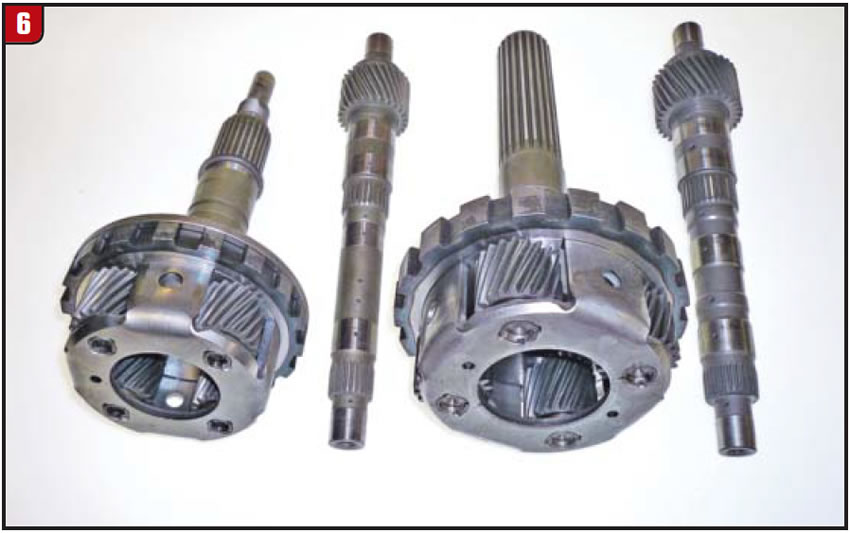
Torque capacity is dependent upon many things. When it comes to clutch packs, diameter, material and quantity all contribute. Pumps, on the other hand, rely on gear design, thickness and controls to provide the needed capacity. When it comes to a one-way clutch (OWC), more factors come into play. Style of the OWC (sprag, roller, diode) is an important base, but element length and quantity are as important. One way to gain element quantity is through overall diameter, as is the case with the A761E and AB60E F3 sprag assembly (Figure 7). The bigger the races, the more elements can be used.

One item that is somewhat comparable is the valve body (Figure 8). To enable the A761E and AB60E to provide six speeds and lockup along with good drivability requires a lot, and a lot is what these valve bodies have. There are nine solenoids, many of which are expensive linears, along with a fair number of valves. Who knows, with a little programming effort, this six-speed could be turned into a 10-speed. All the basics are there.
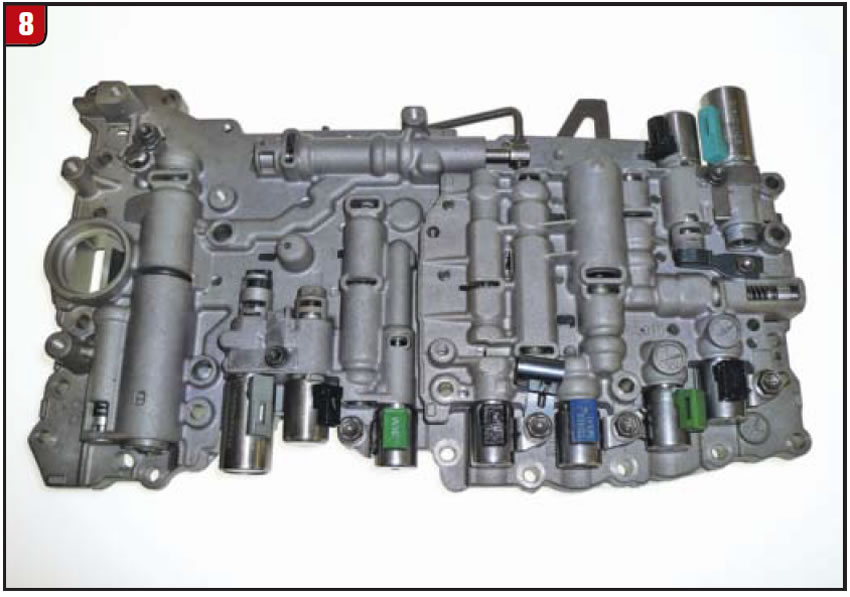
Talk about mileage from a trans design.














